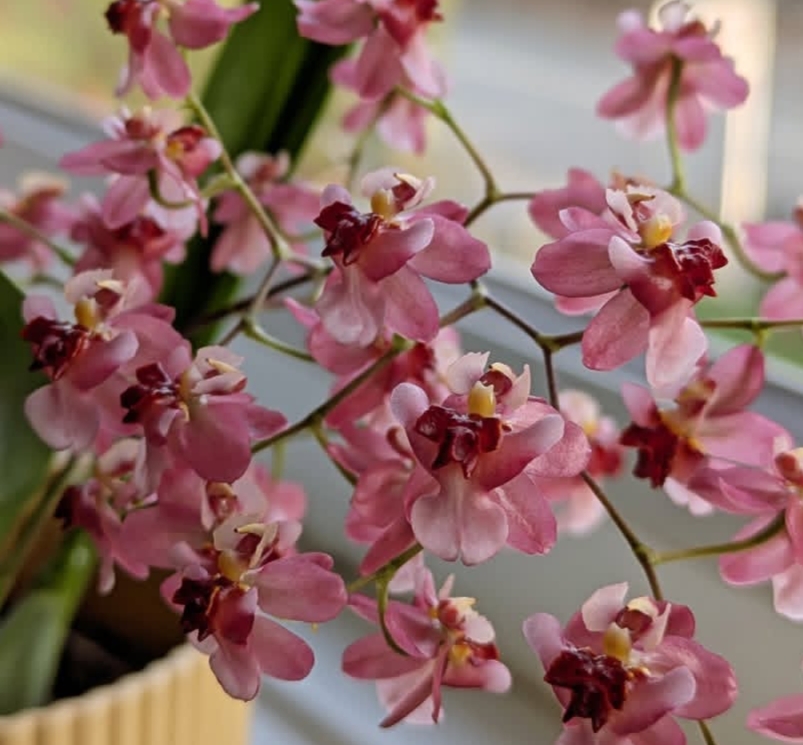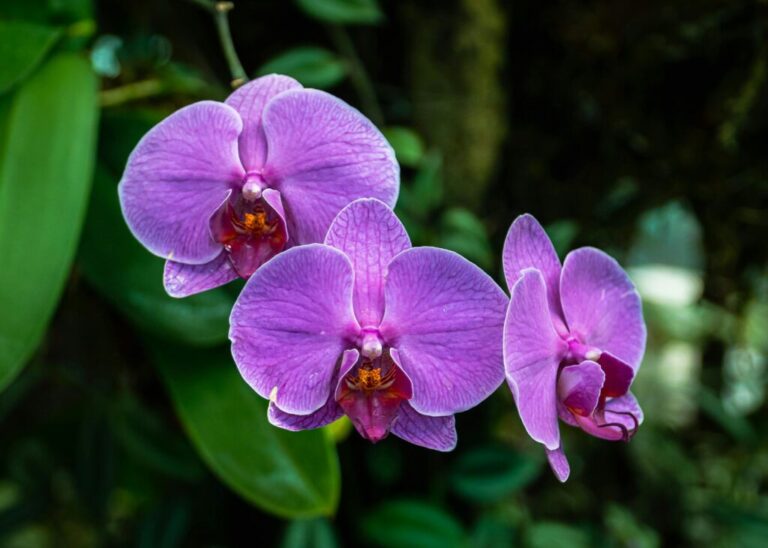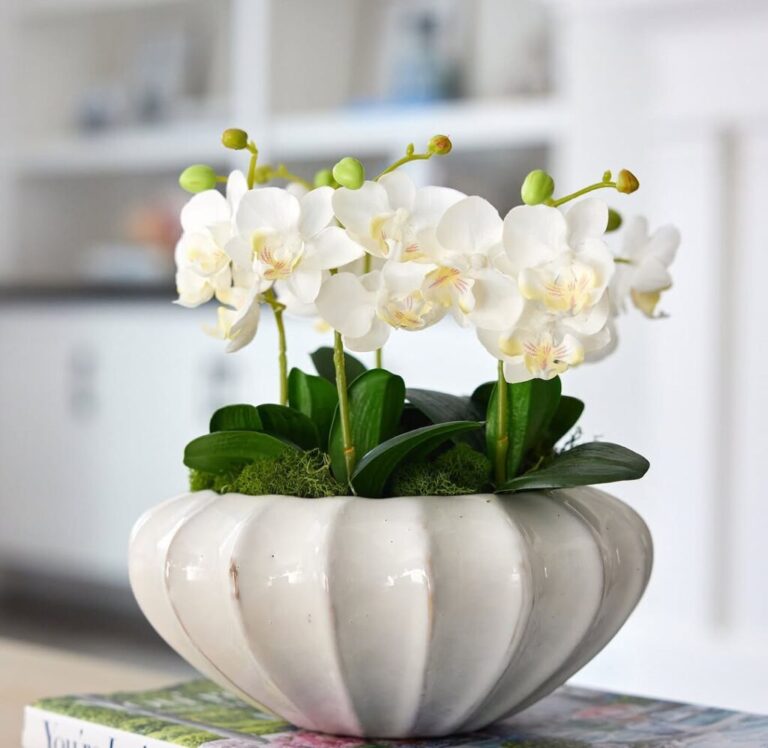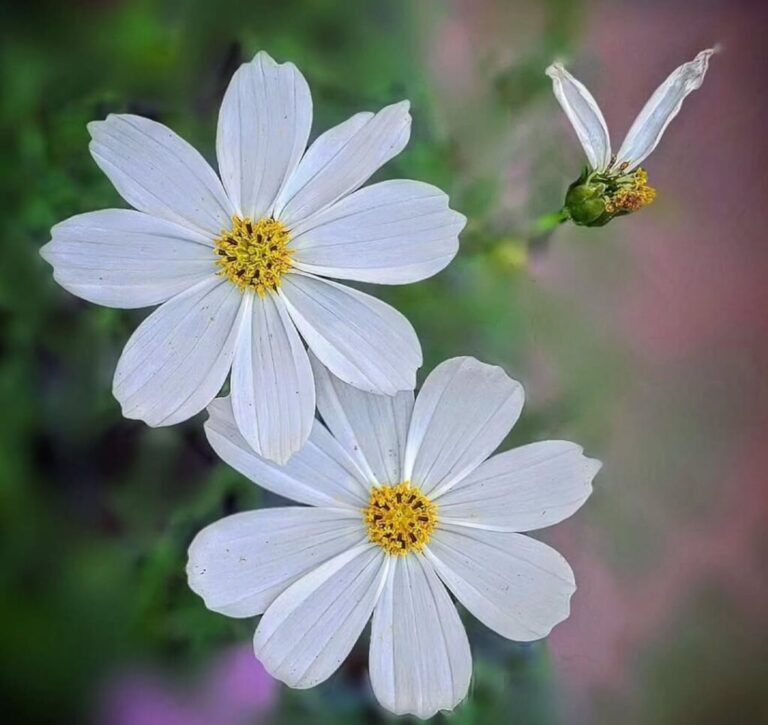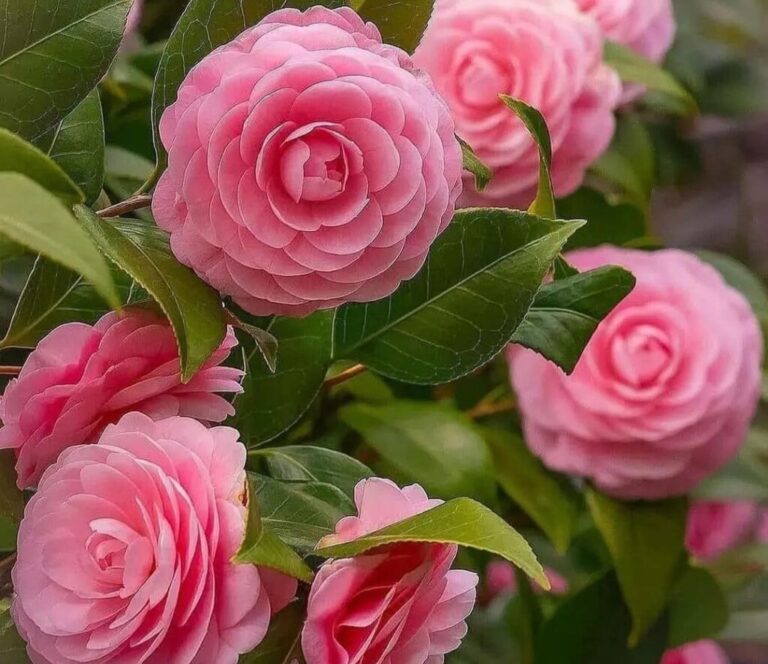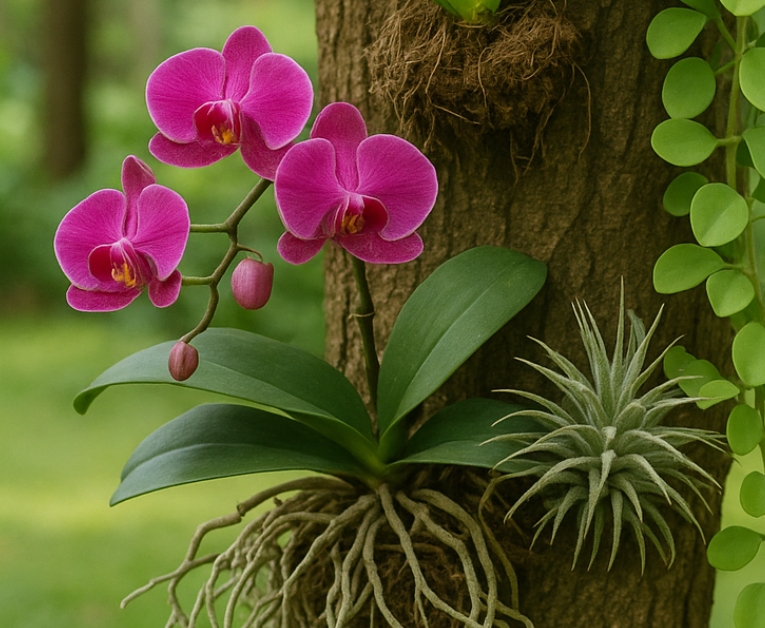The Dancing-lady Orchid, scientifically known as Oncidium, is a stunning species that captivates orchid enthusiasts with its bright, intricate blooms that resemble a dancing lady. Originating from tropical regions of Central and South America, this orchid is prized for its unique and long-lasting flowers. For beginners and experienced orchid growers alike, caring for this beautiful plant requires attention to detail. With the right guidance and techniques, you can ensure that your Dancing-lady Orchid thrives and produces vibrant blooms year after year.
In this detailed guide, we will explore the 10 best care tips for keeping your Dancing-lady Orchid healthy and flourishing. Whether you’re looking to correct common problems or optimize its growing conditions, this post provides practical advice and solutions. So, let’s dive into the best practices to make your Dancing-lady Orchid bloom with vitality.

- 1 1. Provide Adequate Lighting for Optimal Growth
- 2 2. Maintain Ideal Temperature and Humidity Levels
- 3 3. Watering Techniques: Don’t Overwater or Underwater
- 4 4. Use Well-Draining Potting Mix
- 5 5. Fertilize During the Growing Season
- 6 6. Properly Prune Your Orchid for Better Blooms
- 7 7. Repot Your Orchid for Healthy Growth
- 8 8. Avoid Pests and Diseases
- 9 9. Encourage Reblooming with Correct Care
- 10 10. Monitor and Adjust as Needed
- 11 FAQs on Dancing-lady Orchid Care
Dancing-lady Orchid
| Category | Details |
|---|---|
| Scientific Name | Oncidium spp. |
| Common Names | Dancing-lady Orchid, Golden Shower Orchid |
| Bloom Season | Year-round (with proper care) |
| Light Requirements | Bright, indirect light |
| Temperature Range | 65-80°F (18-27°C) |
| Humidity | 40-60% |
| Watering | Once a week (or as needed) |
| Fertilizing | Every 2 weeks during growing season |
| Repotting | Every 1-2 years |
1. Provide Adequate Lighting for Optimal Growth
The Dancing-lady Orchid thrives in bright, indirect light. Position it near a window where it can receive a few hours of natural sunlight without being exposed to harsh, direct rays. Too much direct light can lead to leaf burn, while too little can result in weak growth and a lack of blooms.
Quick Tip: If your orchid’s leaves start turning yellow or brown, it’s a sign that it might be getting too much direct sunlight. Move it to a location with filtered light to ensure healthy growth.
2. Maintain Ideal Temperature and Humidity Levels
Dancing-lady Orchids prefer moderate temperatures ranging from 65°F to 80°F (18°C to 27°C). They are sensitive to sudden temperature fluctuations, so avoid placing them near drafts, air conditioners, or heaters. A consistent temperature is key to their overall health.
As for humidity, this orchid enjoys a humid environment. Aim for 40-60% humidity to help keep your plant thriving. If you live in a dry climate, using a humidity tray or a room humidifier can help achieve the ideal humidity levels.
Quick Tip: To maintain humidity, mist your plant lightly once or twice a week. Avoid overly saturating the leaves, as this can encourage rot.
3. Watering Techniques: Don’t Overwater or Underwater
Proper watering is crucial to the health of your Dancing-lady Orchid.Root rot may result from overwatering, whereas stress and dehydration may result from underwatering. When you feel that the top inch of soil is dry, water the orchid. Ensure that the pot has good drainage to allow excess water to escape.
Quick Tip: Water the orchid early in the day so it has time to dry before nightfall. Wet roots at night can lead to fungal issues.
4. Use Well-Draining Potting Mix
Dancing-lady Orchids thrive in a well-draining potting mix. A mix designed specifically for orchids, such as one containing bark, perlite, and sphagnum moss, is ideal. This allows for proper airflow to the roots and prevents the roots from sitting in excess moisture.
Quick Tip: Avoid using regular houseplant soil, as it retains too much moisture and can suffocate the orchid’s roots.
5. Fertilize During the Growing Season
Fertilizing your Dancing-lady Orchid helps promote healthy growth and vibrant blooms. During the growing season (spring and summer), fertilize the plant every two weeks with a balanced orchid fertilizer, diluted to half strength. Reduce fertilizing to once a month in the fall and winter when the plant is not actively growing.
Quick Tip: If you notice yellowing leaves, reduce the amount of fertilizer, as overfeeding can lead to nutrient burn.
6. Properly Prune Your Orchid for Better Blooms
Pruning is an essential part of caring for your Dancing-lady Orchid. After the flowers have faded, remove the spent flower spike by cutting it back to the base. This encourages the plant to put energy into new growth rather than maintaining old flowers.
Quick Tip: If your orchid’s flower spike turns brown, it’s time to prune it back. Don’t remove healthy green spikes, as they may bloom again.
7. Repot Your Orchid for Healthy Growth
Repotting is important for maintaining the health of your Dancing-lady Orchid. Repot the orchid every 1-2 years, or when the potting medium starts to break down. Choose a pot that is just slightly larger than the current one to prevent overwatering and root rot. When repotting, carefully remove old roots and trim away any that are rotting or dead.
Quick Tip: After repotting, allow the orchid to rest for a few weeks before resuming fertilization and regular care.
8. Avoid Pests and Diseases
Dancing-lady Orchids can be susceptible to pests such as aphids, mealybugs, and scale. Keep an eye on your plant for signs of pests, such as sticky residue or discolored leaves. Neem oil or insecticidal soap should be used right away to treat any infestations.
Quick Tip: Regularly inspect the undersides of leaves for pests. Clean the plant’s leaves with a damp cloth to keep it pest-free.
9. Encourage Reblooming with Correct Care
If your Dancing-lady Orchid is not blooming, it could be due to improper care conditions. Ensure the orchid is receiving adequate light, humidity, and temperature. Additionally, some orchids require a rest period of cooler temperatures to trigger blooming. Reducing watering slightly and moving the orchid to a slightly cooler location during the winter months can encourage blooming in the spring.
Quick Tip: Patience is key! If you don’t see blooms immediately, continue providing the right care, and they will eventually bloom.
10. Monitor and Adjust as Needed
Every Dancing-lady Orchid is unique, so it’s important to monitor the plant’s health and adjust care practices as necessary. If the orchid’s leaves turn yellow, brown, or develop spots, check its light, watering, and humidity conditions. Make adjustments to improve the plant’s environment and watch it recover.
Quick Tip: Keep a journal of your orchid’s care routine and any changes you notice. This will help you track its needs over time and spot problems early.
Dancing-lady Orchid Care
| Care Activity | Frequency | Timing |
|---|---|---|
| Watering | Once a week (or as needed) | Early morning |
| Fertilizing | Every 2 weeks (spring/summer) | During the growing season (March-August) |
| Repotting | Every 1-2 years | In the spring, when the plant is not blooming |
| Pruning Spent Flowers | After blooming | When flowers fade |
| Humidity Maintenance | Mist weekly | Throughout the year, as needed |
By following these expert care tips, you can ensure that your Dancing-lady Orchid grows strong, healthy, and produces beautiful blooms year after year. Whether you’re just starting or looking to refine your orchid-growing skills, this guide offers the practical advice and tips necessary to overcome any common challenges. Keep the plant’s needs in mind, and you’ll be rewarded with stunning, vibrant flowers that truly resemble a dancing la
FAQs on Dancing-lady Orchid Care
FAQs on Dancing-lady Orchid Care
Water once a week, letting the roots dry out a little in between applications. In warmer months, increase the frequency; in winter, decrease it.
What is the best light condition for a Dancing-lady Orchid?
Provide bright, indirect light. Avoid direct sunlight, which can scorch the leaves, but ensure enough light to encourage flowering.
What temperature is ideal for Dancing-lady Orchids?
Keep temperatures between 60-80°F (16-27°C) during the day and slightly cooler at night to promote blooming.
How do I fertilize my Dancing-lady Orchid?
Use a balanced orchid fertilizer (20-20-20) every two weeks during active growth and reduce feeding in the dormant season.
When should I repot my Dancing-lady Orchid?
Repot every 1-2 years when the potting medium breaks down or roots outgrow the pot. Use a well-draining orchid mix.
How do I encourage my Dancing-lady Orchid to rebloom?
Provide consistent care, ensure proper light exposure, and allow a slight nighttime temperature drop to trigger blooming.
What humidity level do Dancing-lady Orchids need?
Maintain 50-70% humidity. Use a humidity tray, misting, or a room humidifier if needed, especially in dry environments.
What potting mix is best for Dancing-lady Orchids?
Use a well-draining mix, such as bark, sphagnum moss, or a combination, to prevent root rot and support healthy growth.
How do I prevent root rot in my Dancing-lady Orchid?
Avoid overwatering, use a breathable orchid pot, and ensure the potting mix is well-draining to keep roots healthy.
Can I grow a Dancing-lady Orchid indoors?
Yes, they thrive indoors with proper light, humidity, and air circulation. Place near a bright window with filtered sunlight.
